#rollright
Explore tagged Tumblr posts
Text
‘The riddle of the past’: on Tolkien’s archaeological trail

By Adrián Maldonado
When I was a teenager reading The Lord of the Rings for the first time, a weird thing started happening. Whenever I had to walk any distance, I began to imagine I was embarking upon a great journey across Middle-earth. I remember when sitting around waiting for the bus one rainy afternoon, I saw a clump of bushes with a trickle of water streaming out to the gutter, and I thought, that looks exactly like the map of Fangorn and the Entwash.
I wish I could say then I got on the bus, realized I was being a dork and grew out of it. With apologies to Childish Gambino, I never got off that bus. I still haven’t.
A lifetime later, I realize I’m not alone in looking for Middle-earth everywhere. It’s not hard to find a ‘Tolkien Trail’ of some description near you, wherever you live. There’s a wild one that starts in Lancashire, where Tolkien spent a month once, and ends up in New Zealand by way of Tenerife. I’m surprised they didn’t include the North Pole, which Tolkien at least wrote stories about.

The North Pole: not on the Tolkien trail yet (source)
But I’m here to say I don’t blame anyone for flying kites about exactly which places they think inspired JRR Tolkien. Comparing someplace to The Shire is a proven strategy of getting me to go there. Just don’t expect me to believe that Tolkien really, truly based this or that chapter on your favourite country lane. The gravy train of finding Tolkien's influences very easily goes off the rails.
That’s why one of the most-used books on my Tolkien shelves is John Garth’s The Worlds of J.R.R. Tolkien (2020). After writing one of the best biographies of Tolkien, Garth has combed through the whole legendarium and then some, diving into the unpublished archive to put forward the most definitive cases for (and sometimes against) the places that really inspired Middle-earth.

New job title: auteur du blog
Recently, I had the life-changing opportunity to visit some of the real-world archaeological (and geological) inspirations as part of a new documentary film (now streaming, only in Europe so far). First of all, I agree with you, it is bonkers that I got this opportunity, and you can tell from the dumb grin on my face at every stop that I’m having the time of my life. But more importantly, going to see these places for myself, to vibe not just with the ancient past but with Tolkien’s imagination itself, reopened some questions for me. Spoiler: the questions are about archaeology.
Previously on Almost Archaeology
A blogging resumé for anyone new here: a decade ago in some of the earliest posts on this page, I jokingly referred to Gandalf as an ‘almost archaeologist’ for the research that first led him to correctly identify Bilbo’s magic ring. While working on a follow-up about Saruman, I uncovered some shocking evidence that ol' Sharkey had actually carried out legit fieldwork long before Gandalf stumbled into the library of Gondor.

Can we burn candles any closer to the ancient scrolls (source)
This productive period of avoiding essay-marking coincided with the release of the (mostly tragic) Hobbit film trilogy, and I had a great time cataloguing the archaeological themes in a trilogy of posts.
Throughout all this happy procrastination, it slowly dawned on me that Tolkien and other early fantasy writers were busy inventing new approaches to worldbuilding just as archaeologists like V. Gordon Childe were writing their own sweeping European prehistories. Studying Tolkien is actually helping me study archaeology. But can the study of archaeology help us understand Tolkien?
Chasing Tolkien
Tolkien fans have always been fascinated by the hints of the real-world sites, texts and ideas he used as inspiration, just as he always bristled at their attempts to pin him down. But I think the search encourages close reading and travel, surely no bad thing overall.

Pub pilgrimage (source)
Most Tolkien fans, if given the chance, will try and visit Oxford some time in their life, maybe have a pint at the Eagle and Child if at all possible. For us it is more than fandom, but a pilgrimage, an act of paying respect, bearing witness, and maybe also, in some ineffable way, entering the story. Searching for his real-world inspirations is no less valid than literary scholars scouring his writings for allusions to ancient texts and medieval poetry. We don’t realize we’re doing it, but collectively, Tolkien scholars and fans alike are building a new canon: the definitive set of works, things and places which provide prophetic insight into the legendarium, a sort of Tolkien Old Testament, works that, if studied and pondered, may lead to a greater understanding of the ‘sacred’ texts.
But this is, by and large, a literary pursuit. How does Garth’s Worlds of Tolkien, dealing in earthly locales, fit in with this project? It presents the authoritative argument for the way that Tolkien’s travels in the material world shaped his vision of a mythical past as much as ancient texts. It shows that inspiration is only very rarely one-to-one, but a layering of experiences, including of real-world objects and places. There’s even a chapter specifically about archaeological inspirations, but Garth, as much as I idolise him, is not an archaeologist, and there's more to build on here. As Dimitra Fimi’s work has shown, and I explored in my worldbuilding post, there is still plenty to excavate from Tolkien’s relationship to the discipline of archaeology, as both were in their formative years at the start of the last century.
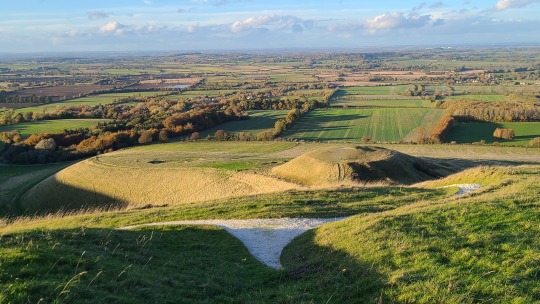
The 'Dragon Hill' beneath the Uffington White Horse (own work)
One example is the fortress of Amon Sûl or Weathertop. Garth explores the possible inspiration for this particular place at the Dragon Hill ‘fort’ beneath the Uffington White Horse which he certainly visited many times. This was a bit of a reach for me, and now having been there, I am less convinced. While the site is certainly striking, it does not dominate the horizon the way I imagine Weathertop, as White Horse Hill looms right behind it. Nor does it have the look of an old, ruined castle. If anything, the older and bigger Uffington Castle, the Iron Age hillfort soaring above them both, would be a better candidate, but neither ring true for me.
Not to worry though, because this is ironically where Garth’s book shines. One of the things it does best is showing how it doesn’t really matter that there is not a one-to-one connection between places Tolkien visited and locations in Middle-earth.
In the ‘Ancient Imprints’ chapter, and in an appendix dismissing any connections to the Vyne Ring, Garth discusses the relationship between Tolkien and the prominent archaeologist Sir Mortimer Wheeler. Sure, Tolkien famously wrote a note on the god Nodens for the Wheelers' excavations at Lydney, Gloucestershire, but it is not clear that they ever met, much less that Tolkien ever visited the site. (It remains very cool that the site was known as the ‘Dwarf’s Hill’ and had Roman-era mine tunnels, but still.)
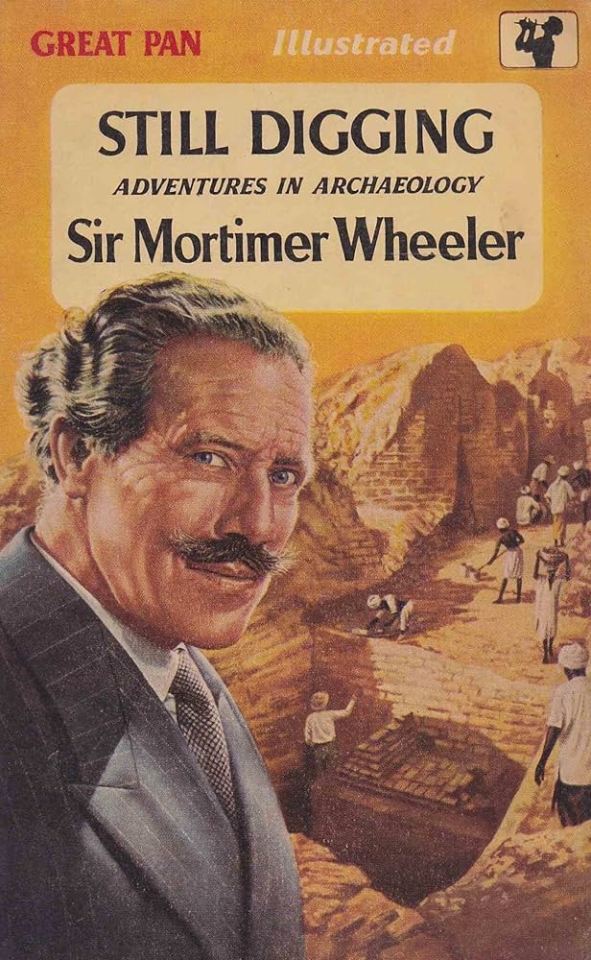
Action-packed archaeology: Sir Mortimer Wheeler (source)
Garth discusses the popular, action-packed accounts that Wheeler published in British newspapers during his excavations at Maiden Castle, Dorset Iron Age hillfort in the 1930s. It is one thing to assume Tolkien ‘must have’ read these, but Garth has the receipts (140, n. 35). He uses this to connect the Maiden Castle burial pits to the Barrow-wights, but to me, Maiden Castle, with its tales of monumental but forgotten wars, is probably more relevant to Tolkien's description of Weathertop, even if they look nothing alike. (Actually, if you really asked me, I’d say there’s nothing more Weathertop-y than Castell Dinas Brân in North Wales, even if there’s nothing connecting it with Tolkien I know of.)
Weathertop is best explained as a mix of different touchpoints ranging from Iron Age forts to medieval castles that would have bumped around in Tolkien's mind as he wrote. But if you asked him directly, he would surely dissemble – would he even be able to isolate these diffuse inspirations himself if asked?
Another important lesson from Garth’s book is that the stories grew in the telling. The way Tolkien understood Middle-earth at the outset of the Lord of the Rings writing process in 1938 changed dramatically by the time of its publication in 1954. Sticking with the example of Weathertop, Garth shows how this changed from the largely atmospheric, anonymous ‘old castles with an evil look’ seen by Bilbo in The Hobbit, to the very specific Second-Age stronghold of Amon Sûl as described by Aragorn (FotR 1, ch 9).
Tolkien’s archaeological travels
It was with Garth’s book in hand that the film crew for Tolkien: The True Story of the Rings came up with a list of key places in England, France and Switzerland to visit, and Garth is of course a prominent voice in the final film. I’m more in the role of audience surrogate, tagging along for the England leg of the journey, and I can tell you, it was a life-changer. We went to some of the places with the clearest analogues in the books, places where you can pretty much read a description on a single page, look up and see what he’s describing.
But only very few of these did Tolkien ever explicitly acknowledge. For instance, after the Battle of the Hornburg, Gimli describes in poetic detail the Glittering Caves (or Aglarond) he saw beneath Helm’s Deep.
Here they have one of the marvels of the Northern World, and what do they say of it? Caves, they say! Caves! Holes to fly in time of war, to store fodder in! My good Legolas, do you know that the caverns of Helm’s Deep are vast and beautiful? There would be an endless pilgrimage of Dwarves, merely to gaze at them, if such things were known to be. Aye indeed, they would pay pure gold for a brief glance! (TT 3, ch 8)
Tolkien’s letter 321 confirms it was the caves of Cheddar Gorge he was describing, which he had visited several times, including a heavily-freighted moment, while on honeymoon with Edith in the spring of 1916 – mere months before he marched to the Battle of the Somme.

Caves, they say! Cox's Cave, Cheddar (own work)
In most other places, the influence is not so direct. The joy of visiting these is to commune with past visitors, up to and including Tolkien, to try and feel what they felt. More often than not, that feeling is not about what you can see, but what you cannot. Visiting ancient monuments is the search for the uncanny, of seeing and touching something that has cheated time by surviving this long, and equally ruminating on how much has been lost to time’s bastard axe. For some, reflecting on past lives can create a sincere yearning to fill in those gaps by any means necessary – by consulting the archives where they exist, or by archaeological investigation where they don’t.

Wayland's Smithy, Oxfordshire (own work)
This is kind of how Tolkien felt when he read ancient poetry – it was a single enigmatic mention of ‘Éarendel’ in an Old English poem that arguably sparked the entire legendarium. But it is less well-appreciated that he got this feeling from places with evocative names and legends attached to them. Dimitra Fimi, also featured prominently in the documentary, has spotted this in Tolkien’s early academic works. In a brief stint as reviewer for scholarly journal The Year's Work in English Studies, we can see how the layering of languages in place-names fired his yearning for the ancient past. He ends his 1926 review with the potential for an “alliance of Philologia and Archaeologia.” He connects the discovery of Roman mosaics at Fawler, Oxfordshire with the origins of its place-name in the Old English fāg flōr, tessellated floor, meaning early English speakers came to this ruined villa and were struck by its multi-coloured pavement. This example immediately rung bells in his mind, as the poem Beowulf uses the phrase on fāgne flōr to describe the pavement of the mead-hall of Heorot. Tolkien would later go on to describe the king’s hall of Meduseld at Edoras as having a floor “paved with stones of many hues” (TT 3, ch. 6), creatively marrying archaeological and linguistic inspirations with allusions to medieval literature.

The Rollright Stones, Cotswolds (own work)
The ancient monuments we visited for the film, including the Rollright Stones and Wayland’s Smithy, fascinated Tolkien not just because they were ancient remnants, but also because they had acquired names and legends thousands of years after they were built. The names we still use for them derive from the early medieval period, when people reimagined them in the same way as they coined the name Fawler. Maybe he wasn’t an archaeologist, but Tolkien was able to excavate these layers of meaning from a variety of source materials from Old English literature to place-names. Tolkien's Hobbits, he imagined, were something like the Anglo-Saxons, enchanted by the spirits that still inhabited these ancient megaliths.
Tolkien the Professor
But Tolkien was not content merely to leave us wondering about these ancient monuments. A big reason for writing the Ring cycle was the chance to explore – even excavate? – in the world he had conjured to life. In a brilliant article on the archaeology of Tolkien’s world, Deborah Sabo showed how “encounters with ruins—or, to choose a more inclusive term, archaeological places—contribute to the successful evocation of a sense of history in Middle-earth” (2007, 91). The Hobbits stand in for the readers, being taken on a walking tour of Middle-earth. When Bilbo and his Party find ancient swords in the Trollshaws, they go ask Elrond how old they are and who made them, and we get our first glimpses of the antiquity of these lands. Years later when Frodo and his party find themselves at one of Bilbo’s ‘old castles’, Aragorn is there to expound on its historical significance.
We are conditioned to expect that Middle-earth has an epic history, but one that is precariously on the edge of being forgotten. This is not dissimilar to the rural England of Tolkien’s youth, with the search for British prehistory a very recent development at that point. But he was on a different kind of mission. His interest in place-names as artefacts all added to what he called in his 1926 review “the allurement of the riddle of the past” and this work as “the recapturing of fitful and tantalizing glimpses in the dark” (65). As Sabo points out, in LotR,
almost every encounter with an archaeological place springs a mnemonic trigger that brings to some character's mind a connection to the past, and a context for learning, either a deepening sense of his own heritage and identity, or sympathy for that of another…encounters with ruins and archaeological places in The Lord of the Rings always lead to personal growth. (2007, 108-9)

It is striking to go back to the big book of Tolkien’s Letters with this in mind. One of the earliest (number 7) is the cover letter he wrote to the University of Oxford when he applied to the Rawlinson and Bosworth Professorship of Anglo-Saxon in 1925, at the age of 33. He ends it with his sincere wish to continue “the encouragement of philological enthusiasm among the young.”
He of course got the job, and held that professorship for twenty years. But he'd be encouraging the youth for generations to come.
It is then no surprise the Tolkien readers are all susceptible to seeing Middle-earth everywhere. Tolkien himself trained us to peel back the layers of stories we love, and ground ourselves with roots in our own epic pasts, wherever we are.
And some of us grow up to be archaeologists.
***
Featured image by me
Watch Tolkien: The True Story of the Rings on Arte.tv
AlmostArch is no longer on Twitter. Follow us instead at AlmostArch.bsky.social.
3 notes
·
View notes
Text
Jerusalem ["And did those feet in ancient time"] by William Blake
Preface to Milton a Poem
#WilliamBlake #Jerusalem #poetry #poetrycommunity #poems #WritingCommmunity #photography
youtube
Jerusalem ["And did those feet in ancient time"] by William Blake
Preface to Milton a Poem
#WilliamBlake #Jerusalem #poetry #poetrycommunity #poems #WritingCommmunity #photography
0 notes
Text

Tom Baker at the Rollright Stones, on the Oxfordshire/Warwickshire border (with some added prop stones): the setting of the Doctor Who story, The Stones of Blood, 1978.
44 notes
·
View notes
Text
Ancient stone bothering
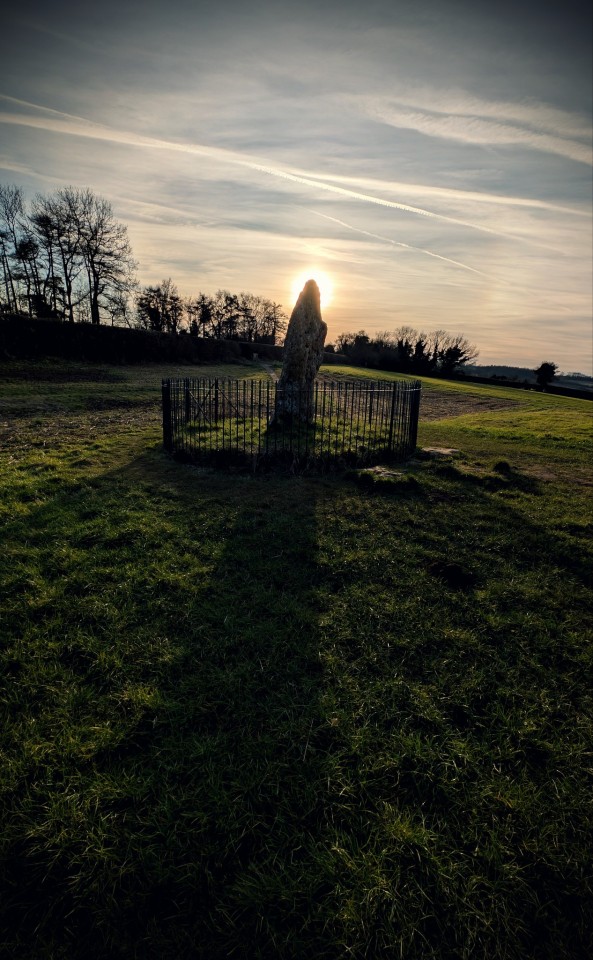



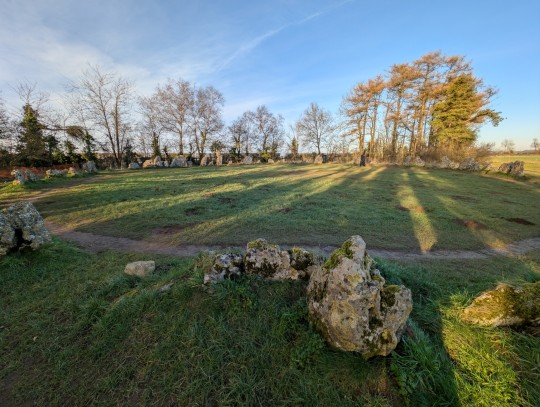
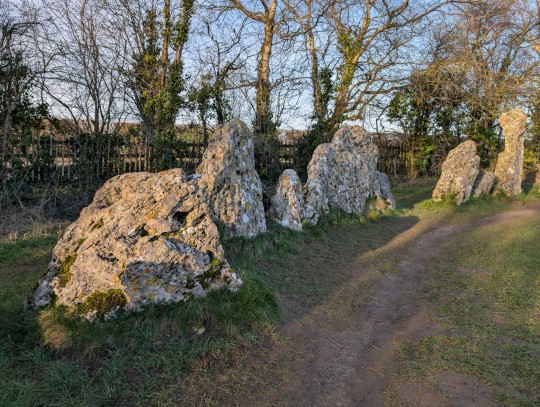
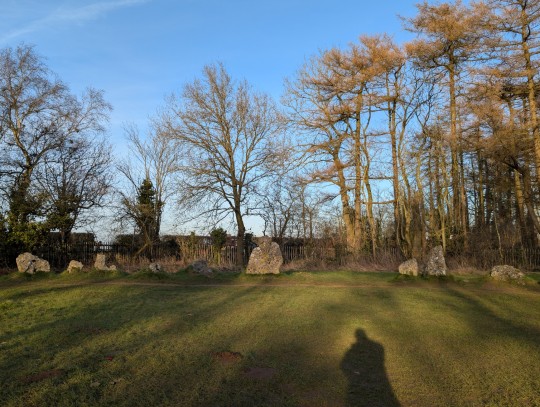
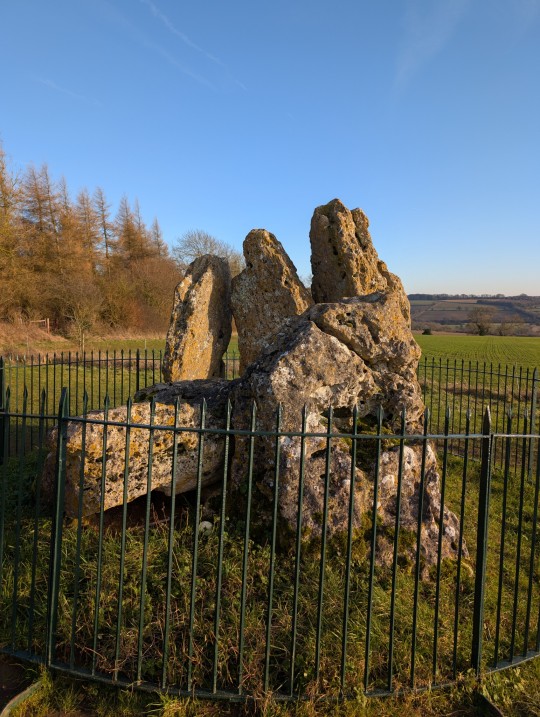
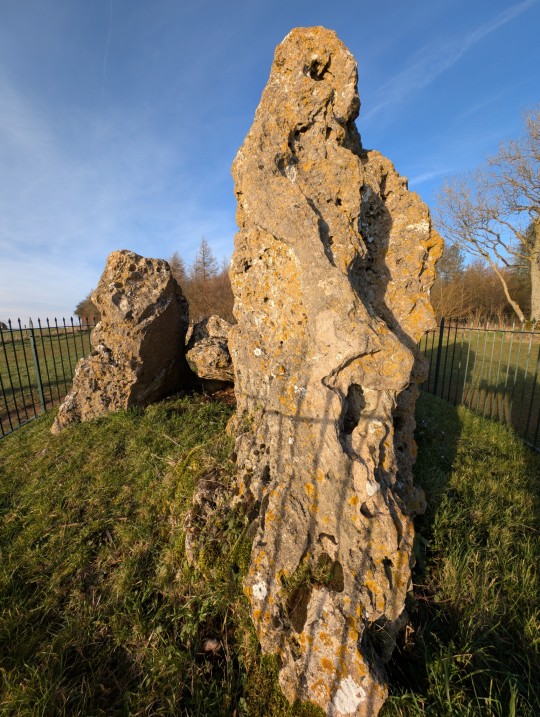

2 notes
·
View notes
Text

The Rollright Stones
File under folklore and legends, these are The Rollright Stones, an historic landmark in Britain on the borders of Oxfordshire, and Warwickshire. I first heard of them in a song from Traffic's 1973 album Shoot Out At The Fantasy Factory (lyrics below). Tales of the British isles from King Arthur and the Knights of the Round Table to Stonehenge to the Druids to ancient castles to the Rollright Stones have long fascinated me - an influence I came by from listening to British Folk and Progressive Rock when I was growing up. Music is not just for listening, but also for learning.
https://en.wikipedia.org/wiki/Rollright_Stones
The Rollright Stones
'Til I found out Where will I go, where will I go I don't know, I don't know I don't know where
The space is between my eyes Open up the heavenly skies Death awaits with pearly gates Those who've been mesmerized Many years has come and gone
Went to see a standing stone Some in circles, some alone Ancient, worn and weather torn They chill me to the very bone
Many of these can be seen In quiet places, fields of green Of hedgerow lanes with countless names But the only thing that remains are the roll right stones
Space age before my eyes Opening up the skies Devil waits with pearly gates For those who have been mesmerized
Many a years have come and gone But progress marches slowly on In nature's paint, she hides the stain 'Cause everybody is going insane The only, the only thing that will sustain are the roll right stones
Roll right stones Roll right stones Roll right stones Roll right stones
Roll right stones Roll right stones Roll right stones
'Til I find out Where will I go, where will I go I don't know, I don't know I don't know where
The space is between my eyes Open up the heavenly skies Death awaits with pearly gates Those who've been mesmerized Many years has come and gone
Went to see an ancient mound People buried underground Long ago, will never know What it was like to hear their sounds
Black crow, I know you've been here You've seen the sights of yesteryear You steal the grain of the conquered plain But the only thing that remains are the roll right stones
Space age before my eyes Opening up the skies Devil waits with pearly gates For those who have been mesmerized
Many a years have come and gone But progress marches slowly on In nature's paint, she hides the stain 'Cause everybody is going insane The only, the only thing that will sustain are the roll right stones
Roll right stones Roll right stones Roll right stones Roll right stones
Roll right stones Roll right stones Roll right stones Roll right stones
Space age before my eyes Opening up the skies And death awaits with pearly gates For those who have been mesmerized, yeah
Many a years have come and gone But progress marches slowly on In nature's paint, she hides the stain 'Cause everybody is going insane The only, the only thing that will sustain are the roll right stones
Roll right stones Roll right stones Roll right stones Roll right stones ...
Source: Musixmatch
Songwriters: Steve Winwood / Jim Capaldi
Roll Right Stones lyrics © Freedom Songs Ltd., F.s. Music Ltd
5 notes
·
View notes
Text
The Traveler’s Burden
Daily writing promptWhat strategies do you use to cope with negative feelings?View all responses Under the rain’s gentle rhythm, she stood at the edge of eternity, choosing humanity over the infinite—a moment where loss became liberation. A Tale of Celestial Relics and Earthly SorrowsThe Return The Starwoven Mantle was gone. Not stolen. Not lost. Left behind. And yet, Priya Sen could not…

View On WordPress
#Ancient Wisdom#Celestial Mysteries#Cosmic Relics#dailyprompt#dailyprompt-1878#human connection#Letting go#Loss and Renewal#Mortal Reflection#Redemption#Rollright Stones#Starwoven Mantle
0 notes
Text
Book Review: Stone Martyrs by Erik Hofstatter
Stone Martyrs is the name of Erik Hofstatter’s brand new work due for release in February 2025 as part of the Aqueduct Press Conversation Pieces Series. The Aqueduct Press Conversation Pieces Series focuses on feminist science fiction charting through time with an ever shifting mosaic of literature from short fiction, essays, poetry, speeches, interviews and more. This grand conversation on the…
#Antidote Illusions#Aqueduct Press Conversation Pieces Series#Chipping Norton#Conversation Pieces Series#Erik Hofstatter#Erik Hofstatter reviews#Katerina#Mary Shelley#Mother Shipton#Oxfordshire#Rollright Stones#Soaking in Strange Hours#Stone Martyrs#The Crabian Heart#The Hurricane Caged Inside Her#The King Stone#The King&039;s Men#Tristan Grieves#Ursula Southeil#Whispering Knights#William Camden
0 notes
Text

The Whispering Knights Stone Circle, Rollright Stones, Oxfordshire, England. Good name for a band !!! Rollright Stones lol
1 note
·
View note
Text
So yes, in other news, I've played about with the shop feature on Ko-fi and now have a bunch of my Patreon stories up there for prices so low you should be calling me CMOT Jen.
Ko-fi Shop link baybeee!
And also! There'll be a mini-collection of my four linked Wayland's Smithy/Rollright Stones stories going up on the Ko-fi shop next week. Woo and hoo!

[cover by me, using images by La La La & Chloe Choa from canva.com. No AI plagiarist bot things were used.]
#short fiction#mermaids of st senara#fantasy#patreon#adventures in kofi shopping#rollright stones#waylands smithy
1 note
·
View note
Text
Got to be worth a try!
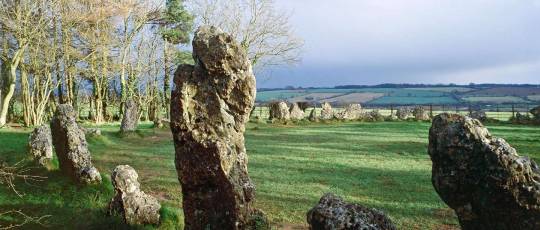
The Rollright Stones, also known collectively as The King’s Men, the King Stone, and The Whispering Knights, Oxfordshire. Photographer unknown.
There’s a bit of fascinating mythology about The Rollright Stones, which relates to the alternative names given to them.
The Stones take their names from a legend about a king and his army who were marching over the Cotswolds when they met a witch who challenged the king saying, “Seven long strides shalt thou take and if Long Compton thou canst see, King of England thou shalt be”. On his seventh stride a mound rose up obscuring the view, and the witch turned them all to stone: the king became the King Stone; his army the King’s Men; and his knights the Whispering Knights (plotting treachery). The witch became an elder tree, supposedly still in the hedge: if it is cut the spell is broken the Stones will come back to life.
Legend has it that it is impossible to count the King’s Men. It is said that the man will never live who shall count the stones three times and find the number the same each time. It is also said that anyone who thrice counts the same number will have their heart’s desire fulfilled. (It is harder than you might expect!) A baker swore he could count them and, to prove it, he baked a number of loaves and placed one on each of the stones. But each time he tried to collect them up some of the loaves were missing, spirited away either by the Devil or by fairies.
At any rate, this collection of megalithic monuments lies on the boundary between Oxfordshire and Warwickshire, on the edge of the Cotswold hills. They span nearly 2000 years of Neolithic and Bronze age development and each site dates from a different period.
The oldest, the Whispering Knights dolmen, is early Neolithic, circa 3,800-3,500 BC, the King’s Men stone circle is late Neolithic, circa 2,500 BC; and the King Stone is early to middle Bronze Age, circa 1,500 BC.
The Stones are made of natural boulders of Jurassic oolitic limestone which forms the bulk of the Cotswold hills. This stone has been used extensively in the region for building everything from churches and houses to stone walls. The boulders used to construct the Rollright Stones were probably collected from within 500m of the site.
[Source]
49 notes
·
View notes
Text

On this day:
EARTH ENERGY ODDITIES
On September 7, 1930, there was a nine-car pileup on a highway between Bremen and Bremerhaven, Germany. The highway was one year old. Since its opening, over one hundred vehicles had crashed at the same location, the site of a stone marker for kilometer 239. The marker was located along a straight stretch.
Some of the survivors told police that just before their accidents they were overwhelmed by "a tremendous thrill.” Other people had experienced a gripping power catch hold of their vehicle and send it off the road. Perplexed police and investigators were at a loss to explain the abundant amount of accidents. A local dowser, Carl Wehrs, thought that there might be a subterranean stream producing an intense magnetic force.
Wehrs investigated his theory with a steel divining rod, which was ripped out of his hands four yards away from the marker. To counteract the current, he buried a copper box filled with copper stars at the bottom of the stone. No accidents happened. A week later the box was removed, and then three cars smashed up. The box was reburied, and the collisions have stopped.
Earth-energy research groups study a variety of forces such as magnetism, radioactivity, radiation, sound waves, and the electrical characteristics associated with certain stones. Evidence has shown that the granite stones known as Long Meg and her Daughters, in Cumbria, Britain, contain concentrated centers of energy.
A road by the Rollright, a stone circle by Oxford, generates an above-average radiation count, and an above-average number reports of hallucinatory experiences are associated with the area. People have told of a number of visions, including visions of a car disappearing as it neared the circle, a large wolf-type animal appearing and disappearing, and a gypsy caravan showing up and then vanishing.
Text from: Almanac of the Infamous, the Incredible, and the Ignored by Juanita Rose Violins, published by Weiser Books, 2009
20 notes
·
View notes
Text
new form of entertainment: zoom into some random place in england and look at the place names
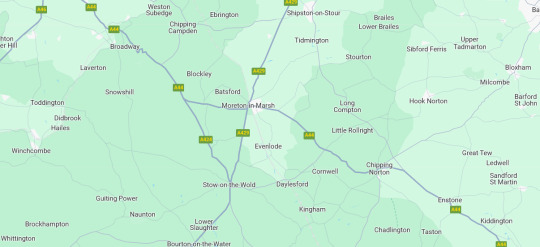
i mean just look at this. Bourton-on-the-water. Moreton-in-marsh. Stow-on-the-wold. Guiting Power. Little Rollright. LOWER SLAUGHTER. I could do this all day
38 notes
·
View notes
Text

Simon Marsden
The rollright stones
Oxfordshire, England
31 notes
·
View notes
Text

Excalibur, from The Boy’s King Arthur by N. C. Wyeth (1919)
The Arthurian Saga. The Land, The King
The Arthurian legends are deeply intertwined with places across the British Isles, each imbued with mystery, spirituality, and connections to the faery realm. Here are some of the most notable:
1. TINTAGEL CASTLE, CORNWALL
Significance: Often regarded as the birthplace of King Arthur, Tintagel’s windswept cliffs and the ruins of the medieval castle exude a mystical atmosphere. According to legend, Merlin lived in a cave below the castle, and the place is seen as a bridge to the faery world.
Spiritual and Magical Aspects: Tintagel has long been linked with faery lore and the supernatural, its caves and rocky coastlines considered thresholds between worlds. The landscape around Tintagel is full of powerful ley lines that attract seekers of Arthurian mystery.
2. GLASTONBURY TOR, SOMERSET
Significance: One of the most hallowed sites in Arthurian legend, Glastonbury Tor is linked with Avalon, the enchanted isle where Arthur was taken to be healed after the Battle of Camlann. Legends suggest that the Tor is a gateway to otherworldly realms.
Spiritual and Magical Aspects: The Tor is crowned by St. Michael’s Tower, and the hill is associated with ancient pagan traditions. The nearby Glastonbury Abbey claims to hold Arthur's grave, discovered (or constructed) by monks in the 12th century. The site’s faery lore is strong, with tales of mystical lights and visions of the fae in its ancient hills and springs.
3. DOZMARY POOL, BODMIN MOOR, CORNWALL
Significance: This small lake on Bodmin Moor is reputed to be where Sir Bedivere cast Excalibur back to the Lady of the Lake after Arthur's final battle. It is a liminal space, seen as the watery portal to the Otherworld.
Spiritual and Magical Aspects: Dozmary Pool is said to be inhabited by spirits and faeries, and locals believed for centuries that the pool was bottomless, adding to its supernatural reputation. The waters are linked to the realms of faery and the Lady of the Lake, who embodies both enchantment and mystery.
4. CADBURY CASTLE, SOMERSET
Significance: Thought by some to be the true location of Camelot, this ancient hillfort has long associations with Arthurian legend. Local tales describe a sleeping army beneath the hill, waiting to rise at Arthur’s command.
Spiritual and Magical Aspects: The site is believed to be sacred and possibly linked to ancient faery practices. Nearby wells and springs were once thought to be magical, and the presence of faery spirits in the woods and caves of the area is part of local folklore.
5. THE ISLE OF ANGLESEY, NORTH WALES
Significance: A place linked with ancient Druidic practices and seen as one of Arthur’s last refuges. The isle has a long history of association with otherworldly beings and faery folk.
Spiritual and Magical Aspects: Anglesey was a centre of Druidic tradition, where ancient magic and Arthurian stories intertwine. Stories tell of faery spirits residing in the wooded hollows and caves, and local lore suggests that powerful magical beings still dwell in its hidden glens.
6. THE FOREST OF BROCELIANDE, BRITTANY (FRENCH BUT WITH CELTIC SIGNIFICANCE)
Significance: Though technically not within the UK, Broceliande in Brittany has strong links to Arthurian lore and Celtic tradition. In British accounts, it often stands in for Britain’s own mystical forests and faery glades.
Spiritual and Magical Aspects: The forest is traditionally home to Merlin, Viviane (the Lady of the Lake), and other faery spirits. It is where Merlin is said to be imprisoned in a crystal cave by Viviane, a powerful enchantress. The forest is steeped in faery lore, with wandering paths and secret pools believed to be portals to the faery realm.
7. THE ROLLRIGHT STONES, OXFORDSHIRE
Significance: Though not directly associated with King Arthur, these Neolithic stones are linked to Arthurian stories as places of enchantment and faery magic. The stones are sometimes called “Arthur’s Knights” or “the Whispering Knights.”
Spiritual and Magical Aspects: The Rollright Stones are considered faery stones, linked with magical forces and potent energies. Stories tell that faery gatherings take place here, and those who attempt to count the stones are enchanted by the fae. Local folklore suggests that they can “come to life” on certain magical nights of the year.
8. CARLISLE, CUMBRIA (ARTHUR’S ROUND TABLE)
Significance: In Cumbria, a prehistoric henge known as “Arthur’s Round Table” is an ancient site tied to Arthurian tales, suggesting that it was a place where Arthur held court.
Spiritual and Magical Aspects: The round henge is surrounded by ancient trees and is thought to be a place of power. Local tales hint at faery encounters near the site and link it to visions of ancient British kings. The spirits of Cumbria’s landscape are thought to be strong here, tied to old Celtic traditions and the fae.
These places form a mystical map across the British Isles, each with its own rich legacy of Arthurian lore and connections to the faery and spirit worlds. Together, they bring the enchanted world of King Arthur and ancient Albion to life.
KING ARTHUR'S RELATIONSHIP TO THE LAND
King Arthur’s connection to Albion—the ancient name for the British Isles—runs deep, symbolising a mystical union between the legendary king and the spirit of the land itself. This connection is represented in both his divine right as a ruler and his close association with Britain’s sacred landscapes, faery realms, and powerful forces of nature.
1. A SOVEREIGN CHOSEN BY THE LAND
In Celtic tradition, a king was more than a mere ruler; he was chosen by the land itself. Arthur’s right to rule was granted through magical signs, such as drawing the sword Excalibur from the stone and being given a new sword by the Lady of the Lake. Excalibur itself was a powerful symbol, an emblem of Arthur’s duty to defend Albion and uphold its mystical and spiritual heritage. His sovereignty, in essence, was a sacred bond with Albion.
2. THE CONCEPT OF THE ONCE AND FUTURE KING
Arthur is famously called “the once and future king,” suggesting he is eternally linked to Albion. According to legend, Arthur will one day return in Britain’s greatest time of need, symbolising that his spirit is bound to Albion’s fate. This idea is rooted in the ancient belief that the land and the king were intertwined, and that the spirit of Albion could be summoned in Arthur’s name.
3. SACRED SITES AND MAGICAL REALMS
Arthur’s life and legacy are marked by Albion’s mystical sites—places like Tintagel, Glastonbury Tor, and Cadbury Castle. These places are charged with supernatural significance, often linked to the faery realm and ancient rites. For instance, Glastonbury is associated with Avalon, an Otherworld island where Arthur was taken to be healed after his final battle. Avalon is portrayed as a mystical reflection of Albion itself, a place eternally verdant and full of magic.
4. GUARDIAN OF ALBION’S PEOPLE AND MYSTERIES
Arthur was seen not only as a warrior-king but as a defender of the British people and their magical heritage. The legend of Camelot and the Knights of the Round Table symbolises a quest to protect Albion’s wisdom and secrets. The Round Table was more than a council of knights; it was a spiritual fellowship aiming to safeguard Albion’s mysteries from foreign invaders and dark forces.
5. ARTHUR’S CONNECTION TO THE FAERY WORLD
Many tales of Arthur hint at his interaction with the faery realm and the Otherworld, both considered intrinsic to Albion’s spiritual landscape. Arthur’s conception and many adventures have roots in these liminal spaces, bridging the mortal world and the mystical one. He often encounters faery beings and Otherworldly foes, showing his role as a mortal champion interacting with the ancient spirits and guardians of the land.
6. ARTHUR’S FINAL RESTING PLACE
Arthur’s departure to Avalon is symbolic of his eternal bond with Albion. Avalon is a mystical island thought to be hidden within or beyond the borders of Albion, mirroring the hidden spiritual forces within the land. Many believe that his return will come from Avalon, signifying the resurgence of Albion’s spiritual power when it is most needed. Glastonbury is sometimes called his grave, yet the stories of his return suggest that he remains Albion’s guardian, even in death.
Arthur’s deep connection to the land of Albion reflects the ancient British belief that kingship was a sacred role, bound by blood, spirit, and duty to the land. Albion’s landscapes, legends, and faery lore are as much a part of Arthur as he is of them, making him an eternal emblem of Britain’s magical and spiritual heritage.
12 notes
·
View notes
Text

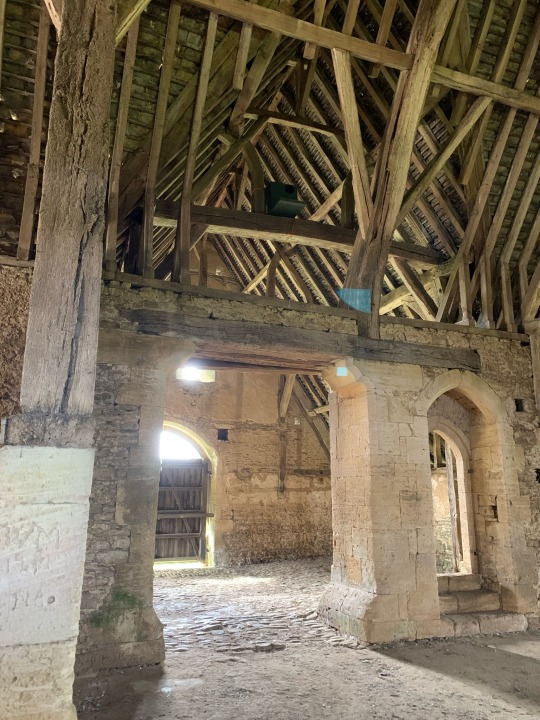

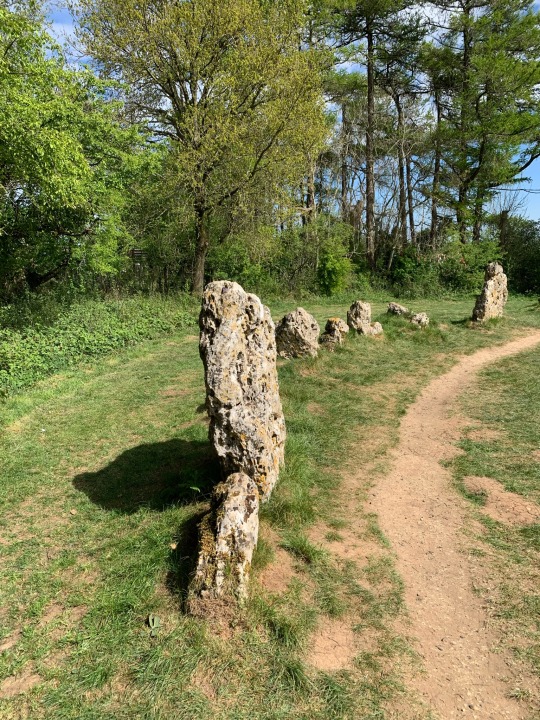
Tagged by the delightful @the-hollow-quiet four photos, no selfies no pets.
New Edward Gorey book (which is joyous), inside the medieval tithe barn at Great Coxwell, bluebell woods at Badbury and part of the stone circle at Rollright.
Not really a tagger (but happy to be tagged)
5 notes
·
View notes
Photo
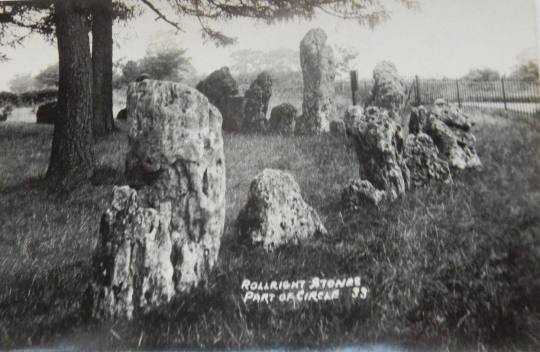
Rollright Stones, Vintage Postcard
#via stone club#stone#stones#postcards#postcard#grey#Black and White#megalith#megaliths#stone circle
189 notes
·
View notes